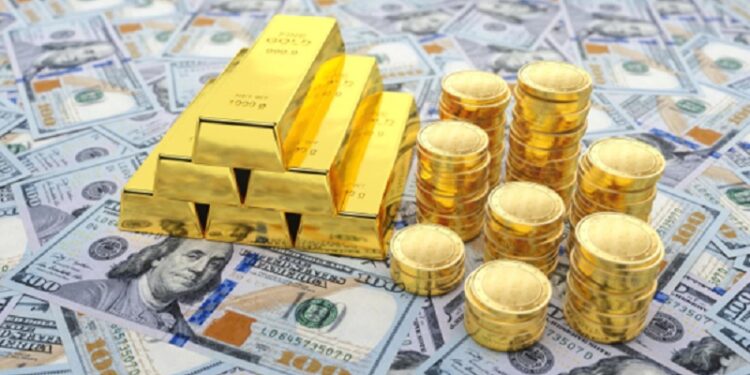Gold prices held steady during Asian trading hours on Friday, nearing the crucial threshold of $2,050 per ounce, buoyed by expectations of potential interest rate cuts by the Federal Reserve amid easing inflation concerns.
The spot prices of gold are on the verge of breaking above the $2,000 to $2,050 per ounce range, a significant level that has been established for most of 2024. However, the strength of the US dollar has limited further gains in gold, with the greenback showing resilience in overnight trading and maintaining its strength in the Asian session.
As of the latest data, spot gold steadied at $2,043.64 an ounce, while gold futures expiring in April dipped slightly by 0.1% to $2,051.95 an ounce by 00:24 ET (05:24 GMT). Both spot and futures markets saw a notable increase of between 0.4% and 0.6% on Thursday, benefitting from month-end buying following a relatively subdued performance in February.
The positive sentiment in the gold market has also lifted other precious metals, with platinum futures climbing 0.3% to $885.45 an ounce, and silver futures rising by the same margin to $22.953 an ounce.
The recent data on the Personal Consumption Expenditures (PCE) price index, the Federal Reserve’s preferred inflation gauge, showed a expected easing in January. This has fueled hopes that inflation will continue to decrease in the coming months, potentially prompting the Federal Reserve to consider rate cuts in June.
However, while traders have slightly increased their expectations for a rate cut in June according to the CME Fedwatch tool, bets on maintaining the current rates have remained steady. Several Fed officials have also cautioned against hasty rate cuts, citing persistent inflationary pressures.
The trajectory of precious metal prices in the near future is expected to be influenced by inflation prints for February and March, as they have historically moved in tandem with US rate expectations. Rising interest rates over the past two years have weighed on gold prices, impacting most other metals as well.
In contrast, copper prices experienced a slight decline on Friday following mixed economic signals from China, the world’s largest importer of copper. While official purchasing managers index data indicated a fifth consecutive month of contraction in the manufacturing sector in February, non-manufacturing activity was supported by the Lunar New Year holiday. Additionally, a private survey revealed expansion in the manufacturing sector, providing some optimism amidst the mixed signals.










